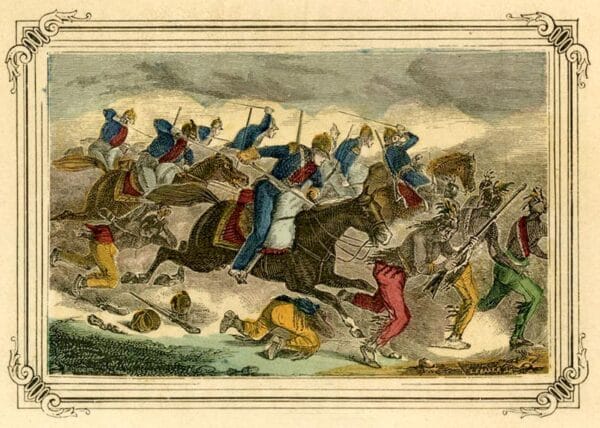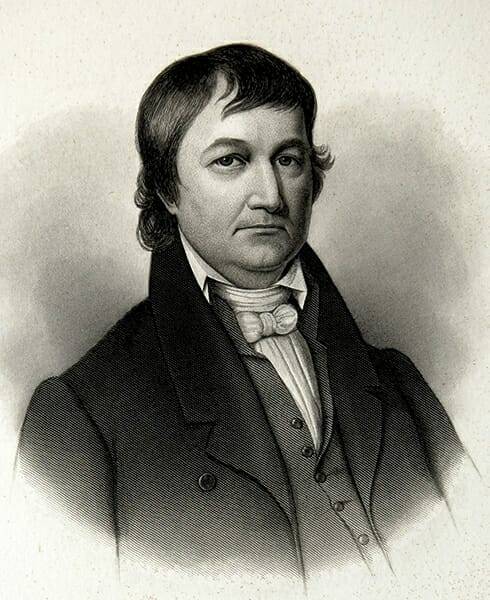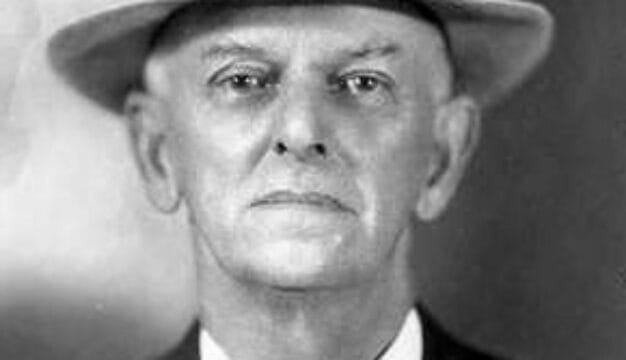Battle of Talladega
Shortly after the commencement of the Creek War of 1813-14, Tennessee militia led by Gen. Andrew Jackson attacked Creek warriors of the Red Stick faction who had besieged a U.S.-allied group of Creeks occupying Fort Leslie near present-day Talladega, Talladega County. As a result of the attack on November 9, 1813, the siege was broken and approximately 300 Red Sticks were killed. American casualties were limited to 15 killed and approximately 85 wounded.
 Battle of Talladega
The Creek War arose during a time of economic hardships and shifting alliances in the Creek Nation. It soon expanded into a confrontation with the United States after approximately 700 Red Stick warriors attacked Fort Mims in present-day Baldwin County on August 30, 1813, killing some 250 defenders and civilians. In response, American military forces from Mississippi, Georgia, and Tennessee staged a retaliatory invasion into the Creek Nation. Units of the Tennessee militia had entered Alabama, then part of the Mississippi Territory, in October 1813 to begin a campaign against the Red Sticks. Soon thereafter, elements of these troops constructed Fort Strother on the Coosa River at a spot known locally as the Ten Islands, about 30 miles south of present-day Gadsden, Etowah County. This fort would serve as a base of operations from which strikes would be launched against Red Stick towns in the vicinity. The first such attack occurred on November 3, 1813, when Jackson’s 900 cavalrymen, led by Gen. John Coffee, attacked the Upper Creek town of Tallushatchee 13 miles to the east on the south side of the Coosa River. Coffee surrounded the town with two columns of his cavalry. He then sent two companies into the center of the town to draw the Creeks out, after which they were caught in a crossfire between the two lines of cavalry. As a result, 186 Red Stick warriors were killed and the remainder were captured. This overwhelming victory convinced a number of Creek towns to side with the United States. When 154 Creeks occupying Fort Leslie near present-day Talladega joined with the United States, Red Stick warriors besieged them just as Jackson’s forces under Coffee were returning from their successful assault on Tallushatchee.
Battle of Talladega
The Creek War arose during a time of economic hardships and shifting alliances in the Creek Nation. It soon expanded into a confrontation with the United States after approximately 700 Red Stick warriors attacked Fort Mims in present-day Baldwin County on August 30, 1813, killing some 250 defenders and civilians. In response, American military forces from Mississippi, Georgia, and Tennessee staged a retaliatory invasion into the Creek Nation. Units of the Tennessee militia had entered Alabama, then part of the Mississippi Territory, in October 1813 to begin a campaign against the Red Sticks. Soon thereafter, elements of these troops constructed Fort Strother on the Coosa River at a spot known locally as the Ten Islands, about 30 miles south of present-day Gadsden, Etowah County. This fort would serve as a base of operations from which strikes would be launched against Red Stick towns in the vicinity. The first such attack occurred on November 3, 1813, when Jackson’s 900 cavalrymen, led by Gen. John Coffee, attacked the Upper Creek town of Tallushatchee 13 miles to the east on the south side of the Coosa River. Coffee surrounded the town with two columns of his cavalry. He then sent two companies into the center of the town to draw the Creeks out, after which they were caught in a crossfire between the two lines of cavalry. As a result, 186 Red Stick warriors were killed and the remainder were captured. This overwhelming victory convinced a number of Creek towns to side with the United States. When 154 Creeks occupying Fort Leslie near present-day Talladega joined with the United States, Red Stick warriors besieged them just as Jackson’s forces under Coffee were returning from their successful assault on Tallushatchee.
Although completely surrounded, a U.S.-allied Creek warrior, wrapped in a hog skin, managed to sneak past the Red Stick encampments to inform Jackson of the situation. Jackson was eager to come to their aid, but he initially was concerned about leaving all of his army’s provisions and equipment, as well as 200 sick and wounded soldiers, at Fort Strother. He concluded, however, that the risk was minimal because additional forces from east Tennessee, under Brig. Gen. White, were expected to arrive shortly with much-needed supplies. With the destruction of Talladega almost certain if the Americans did not respond to the village’s desperate call for help, Jackson decided to strike out with 1,200 infantry and 800 of Coffee’s cavalry to break the siege. As Jackson was approaching Talladega, however, he received word that White’s forces had been recalled and would not be relieving Fort Strother. Jackson had no choice at this point but to press forward to Talladega and return to Fort Strother as soon as he could.
 John Coffee
On November 9, 1813, Jackson’s forces encircled the Red Sticks surrounding Talladega in the hope of entrapping all of the Red Stick warriors in a manner similar to that accomplished by General Coffee’s troops at Tallushatchee. In the ensuing battle, Jackson’s forces killed approximately 300 Red Stick warriors and were successful in breaking the siege. Despite orders to the contrary, three companies of militia retreated as the Red Sticks advanced, creating a gap in Jackson’s encircling forces. This error allowed approximately 700 Red Sticks to escape. Jackson nevertheless characterized the battle as a significant victory and was praised throughout the United States for having inflicted two devastating defeats upon the Red Sticks within just six days.
John Coffee
On November 9, 1813, Jackson’s forces encircled the Red Sticks surrounding Talladega in the hope of entrapping all of the Red Stick warriors in a manner similar to that accomplished by General Coffee’s troops at Tallushatchee. In the ensuing battle, Jackson’s forces killed approximately 300 Red Stick warriors and were successful in breaking the siege. Despite orders to the contrary, three companies of militia retreated as the Red Sticks advanced, creating a gap in Jackson’s encircling forces. This error allowed approximately 700 Red Sticks to escape. Jackson nevertheless characterized the battle as a significant victory and was praised throughout the United States for having inflicted two devastating defeats upon the Red Sticks within just six days.
Jackson’s victory at Talladega was significant in two respects. The rescue of Creeks trapped at Fort Leslie further strengthened the alliance between the Creek Nation and the United States in the war against the Red Stick faction. Also, the combined victories at Tallushatchee and Talladega, which left more than 1,000 warriors dead, wounded, or missing, seriously depleted the number of Red Stick warriors available for the later Battle of Horseshoe Bend, which effectively sealed the fate of the Creek Nation in Alabama.
Additional Resources
Griffith, Benjamin W., Jr. McIntosh and Weatherford: Creek Indian Leaders. Tuscaloosa: University of Alabama Press, 1988.
Halbert, H. S., and T. H. Ball. The Creek War of 1813 and 1814. 1895. Reprint, Tuscaloosa: University of Alabama Press, 1969.



